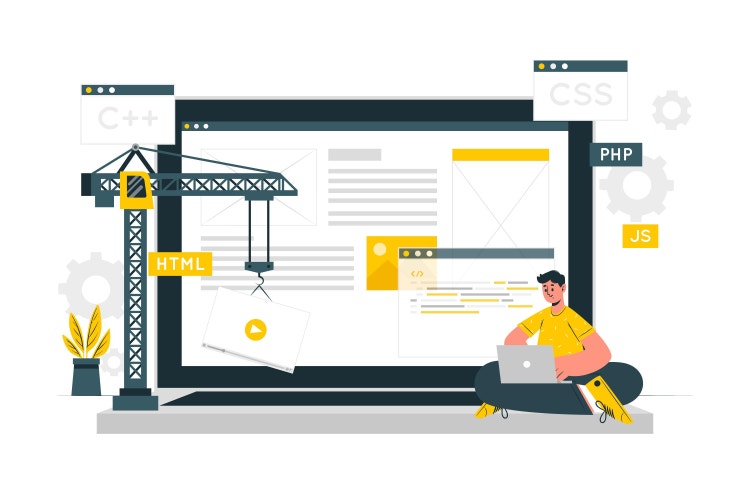Automation and Manual Testing in Adobe Experience Manager
Introduction
Organizations use Adobe Experience Manager (AEM) as their content management system which allows them to create, manage, and deliver dynamic digital experiences across multiple platforms. It comes as a cloud solution which is designed for customization, flexibility and scalability, riguor testing is required to make sure that the system works as intended.
There are two types of testing that AEM supports, manual testing and automation testing. All those who work with AEM will know the pain in trying to maintain its quality and meeting the implementation goals but these two approaches (manual and automation testing) together make that task a lot easier. Each approach has unique strengths and challenges and together they play a vital role in ensuring the quality of AEM implementations.

Manual Testing in Adobe Experience Manager
Manual testing involves human-driven validation of AEM, checking new features, collaborating on workflow changes or simple system changes, they’re done without automating the process and are done manually. This hands-on approach allows testers to explore the application intuitively, ensuring that AEM's dynamic and interactive features work as required. AEM’s core capabilities are content authoring workflows, which are also frequently covered by manual testers.
Manual Testing as the name suggests demands human intervention and includes almost everything in the software testing cycle except automation. In AEM, manual testing is particularly essential for user interface (UI) and user experience (UX) validation. Given the platform’s customizable nature, each project’s UI is distinct and ensuring that these designs are visually consistent across devices and browsers is a task well-suited for manual inspection.

Beyond UI/UX, manual testers often evaluate content authoring workflows, AEM’s backbone for managing content. Creating content for authoring and editing them is an important aspect as well. Every process from creating content to publishing it has to be tested thoroughly so that there’s no disruption to the authors and content editors. Another strengths of all AEM testing scopes is end to end testing. To check whether these outside systems share data manually is the best way to get a sense of how they’ll interact. Lastly, the platforms must also be performance tested as the features include multi language and personalization support.
While manual testing is vital for exploratory and creative validations, it is labor-intensive and prone to human error, especially for repetitive tasks such as regression testing. These limitations highlight the need for a complementary approach: automation testing.
Automation Testing in Adobe Experience Manager
Automation testing, on the other hand, focuses on the use of tools and scripts in test case execution, thus are the best for repetitive and large-scale tasks in short timeframes. This is an essential aspect of AEM as it enables automation regression testing. Once a change is made on AEM components or workflows, automation regression tests provide the confidence that the new additions don’t threaten already existing functionalities. Performance testing is another domain which makes the most of automation. By using Apache JMeter, testers are able to mimic a large number of concurrent users of AEM for testing the response of the platform. This also aids in recognizing possible stress points and improves usability of the platform. Integration testing also benefits significantly from automation. Automating these tests facilitates cross-system communications and minimizes communication errors during system integrations.
Popular tools are Selenium for browser-based functional testing, Adobe Cloud Manager for CI/CD pipelines, and JUnit for unit testing in AEM. However, automation is not without challenges. Setting up and maintaining automation frameworks demands significant time and resources and automated tests are often ill-suited for tasks requiring human judgment, such as evaluating aesthetic details or conducting exploratory testing.

The Complementarity of Manual Testing and Automation Testing
Manual testing, automation testing and their partnerships are all vital in AEM projects, the ideal testing strategy for AEM leverages the strengths of both methodologies. Manual testing ensures a creative, user-focused perspective, while automation testing provides efficiency and consistency for repetitive tasks. When integrated effectively, these approaches complement each other, enhancing both the quality of the application and the speed of delivery. Manual testing excels in areas that require human intuition, creativity, and adaptability. For instance, user interface design validation, where visual inconsistencies or subtle errors may occur is best addressed through manual inspection. Exploratory testing, which uncovers unexpected issues by navigating the application intuitively, also relies on the expertise of human testers.
Logically, any repetitive process such as a regression which would consume a lot of time and multiple errors if tried manually has a quick and accurate solution in automation scripts. Also, automation reduces the effort required to conduct large scale performance testing and is able to support a wide range of testing in an agile setting.
Adobe Experience Manager seems to be primarily focused on developing the testing strategy of combining both testing methods. These methods tend to speed the processes-up and enhance delivery alongside increasing the quality of the application.
Conclusion

